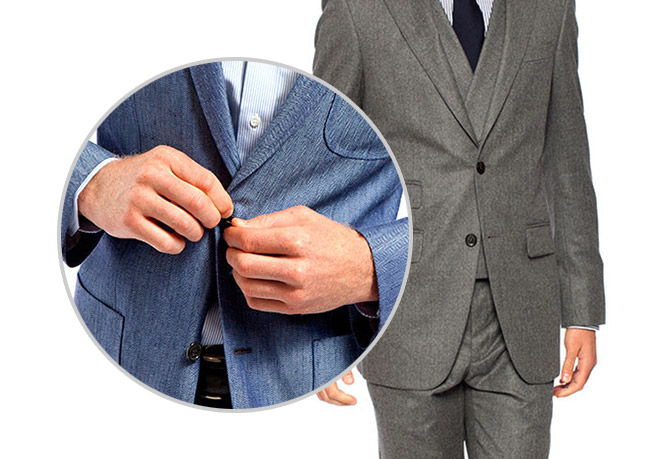The buttonholes in your suit allow the buttons to pass through, fastening one side of fabric to the other. (Mandarin buttons use a loop of cloth or rope instead of a buttonhole.)
The buttonholes have a range of stitches on each side to reinforce the ragged ends of the fabric and prevent wearing. The durability of the buttonholes depends on the way they are sewn within the garment.
The edges of the buttonhole can be stitched by hand or by a machine. With a hand-stitched buttonhole, the tailor makes a slit within the fabric first then finishes the raw edges of the textile with thread sewn in with closely spaced stitches. A gimp cord is attached towards the sides of the buttonhole to serve as reinforcement.
Buttonholes that are made by sewing machines allow for more automation and more variety in the stitching style. These machine-made buttonholes have parallel rows of sewing in zigzag patterns; the actual buttonhole is slit open after the stitching is done.
Keyhole buttonholes are machine-made since it is hard to achieve that look with hand stitching. This style has the usual buttonhole slit but with a rounded hole towards the end of the slit to accommodate the shank of the button without straining or damaging the fabric. This is a common feature in tailored jackets and coats.
Buttonholes in men’s suits are placed on the left, while the button holes in women’s suits are placed to the right. (This reputedly dates to the 19th century, when chambermaids used to wear the buttons to the left; placing the lady’s buttonholes on the right side was therefore a mark of class differentiation.)
